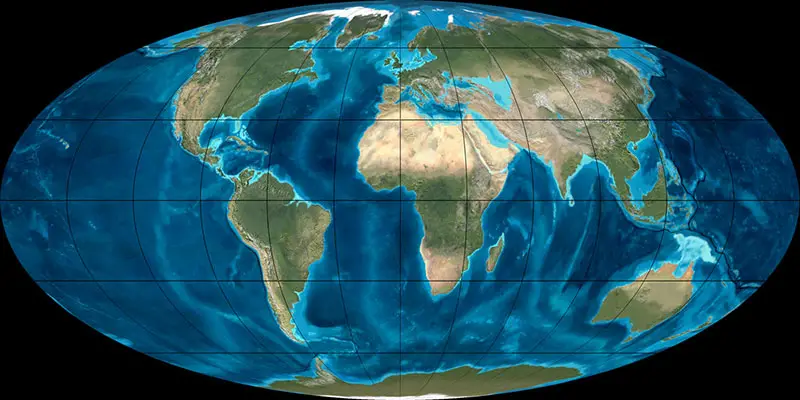†Micropithecus (Dendropithecidae)
Micropithecus ist eine Primatengattung innerhalb der Familie Dendropithecidae, deren 3 Mitglieder ab dem frühen Neogen (Miozän) im Aquitanium lebten, das vor ungefähr 23 Millionen Jahren begann und bis vor 20,4 Millionen Jahren andauerte. Viele Überreste wurden in Kenia gefunden.
Micropithecus clarki
| Sammlung | Epoche, Alter | Kommentar zur Sammlung |
|---|---|---|
| Napak (Napak Member) | Napak I, IV, V, IX, X | |
| Kommentar z. Stratigraphie | ||
| "localities I, IV, V, and IX are intercalated with volcanic tuffs... and biotites from these tuffs at Napak I have produced dates of 19.5 +/- 2 Ma and 18.3 +/- 0.4 Ma" after being "adjusted for new constants" but "the younger date is discrepantly low" so an age of "between 19 and 20 Ma" (i.e., Burdigalian) is favored (Rossie and MacLatchy 2006) |
| Physiologie | |
|---|---|
| Gewicht: | ? |
| Schwestertaxa | |
Literatur
J. G. Fleagle, E. L. Simons 1978, Micropithecus clarki, a small ape from the Miocene of Uganda. American Journal of Physical Anthropology. 49:4, p. 427 - 440, DOI: 10.1002/ajpa.1330490402M. Pickford, E. L. Simons 1982, New Higher Primate Fossils from the Middle Miocene Deposits at Majiwa and Kaloma, Western Kenya. American Journal of Physical Anthropology. 58:4, p. 1 - 19, DOI: 10.1002/ajpa.1330490402
R. E. F. Leakey, A. Walker 1985, New higher primates from the early Miocene of Buluk, Kenya. Nature. 318:4, p. 173 - 175, DOI: 10.1002/ajpa.1330490402
T. Harrison, A. Walker 1989, A new species of Micropithecus from the middle Miocene of Kenya. Journal of Human Evolution. 18:6, p. 537 - 557, DOI: 10.1002/ajpa.1330490402
